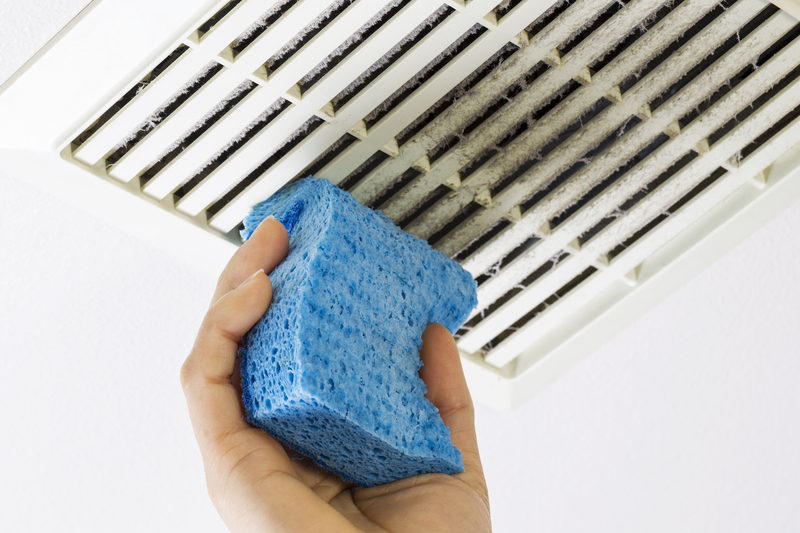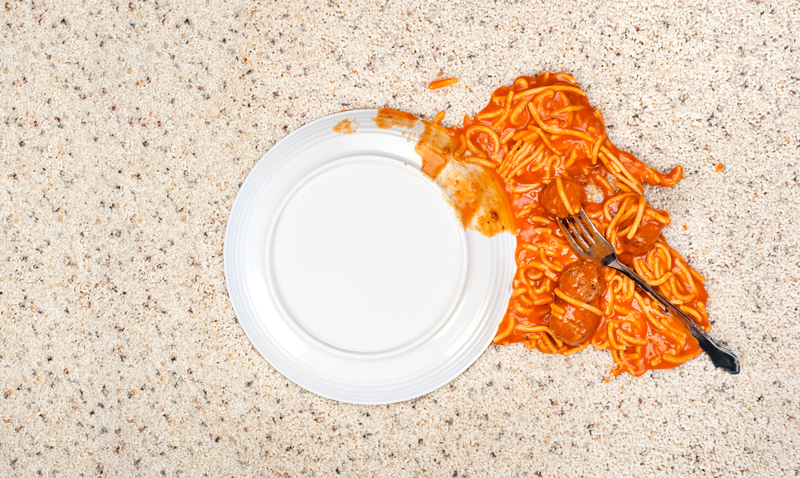Keep Your Window Sills Spotless: Mould Removal Tips
Posted on 09/09/2025
Keep Your Window Sills Spotless: Mould Removal Tips
Are you struggling with mould on your window sills? Mould growth on window sills is not only unsightly, but it can also compromise indoor air quality and threaten your health. In this comprehensive guide, you'll discover the most effective mould removal tips for keeping your window sills spotlessly clean. We'll also share crucial insights into why mould appears, how to prevent it, and the best products for long-term protection.
Understanding Window Sill Mould: Why Does It Occur?
Window sills are prone to mould and mildew because they're often exposed to condensation, humidity, and sometimes even damp building materials. Learning why mould on window sills develops is the first step in knowing how to remove and prevent it effectively.
Common Causes of Window Sill Mould Build-Up
- Condensation: Windows act as cold traps. Moisture in the warm air indoors condenses on the cooler glass and runs down onto sills.
- Poor Air Circulation: Rooms with limited ventilation trap moisture, providing a perfect breeding ground for mould and mildew.
- Structural Leaks: Water seepage through window seals or walls can saturate window frames and sills.
- High Humidity: Bathrooms and kitchens often have increased humidity, leading to persistent dampness around windows.
- Lack of Maintenance: Infrequent cleaning and dust build-up give spores a substrate to take hold and grow.
The Health and Property Risks of Neglected Mould
Mould on window sills looks unpleasant, but did you know it could also:
- Trigger Allergies and Asthma: Mould spores in the air may aggravate respiratory symptoms in sensitive individuals.
- Cause Stains and Structural Damage: Persistent moisture and mould can rot wooden sills and damage paint.
- Reduce Indoor Air Quality: Continued exposure to mould can compromise overall home hygiene.

Spotting Mould on Window Sills: What To Look For
Keep a vigilant eye for early signs of mould on your sills. Catching problems early means they'll be easier to treat and less likely to cause long-term damage.
- Black, green or white patches: These are classic signs of window sill mould.
- Musty odours: Persistent damp, earthy smells often indicate hidden mould growth.
- Discoloration or peeling paint: Mould feeds on paint, wood, and even some plastics, leading to unsightly spots and damage.
- Dampness or water droplets: If your sills often feel wet, you're at risk for rapid mould growth.
DIY Window Sill Mould Removal: Step-by-Step Methods
Ready to eliminate mould from your window sills? Here's how to get rid of both minor and more stubborn patches using proven, safe, and household-friendly methods.
Preparation Before Starting Mould Cleaning
- Open windows for ventilation
- Wear gloves, a mask, and goggles to avoid direct contact with mould spores
- Gather your cleaning supplies: soft brush, old toothbrush, cleaning cloths, and your chosen mould remover
1. Cleaning Window Sill Mould with Vinegar
- Mix equal parts white vinegar and water in a spray bottle.
- Spray the solution generously on the mouldy sill.
- Let it sit for at least one hour to kill mould spores.
- Scrub the mould away with a brush and wipe clean with a damp cloth.
- Allow the sill to air dry thoroughly.
Note: Vinegar effectively eliminates many household mould species and is safe for most painted and wooden surfaces.
2. Using Baking Soda and Water for Stubborn Stains
- Make a paste with baking soda and a small amount of water.
- Apply the paste to the problem areas using a cloth or brush.
- Gently scrub in a circular motion to lift mould and stains.
- Wipe away any residue with a clean, damp cloth.
3. Hydrogen Peroxide for Persistent Mould
- Pour 3% hydrogen peroxide into a spray bottle (no need to dilute).
- Spritz onto the mouldy sill and allow to sit for 10-15 minutes.
- Scrub the area, then rinse with water and dry thoroughly.
4. Soap and Water for Routine Cleaning
- For slightly dirty or dusty sills, a gentle mixture of dish soap and warm water can remove surface dirt that feeds mould.
Remember to dry your window sills completely after each cleaning session to stop new mould growth before it starts.
Best Products for Mould Removal from Window Sills
When natural methods aren't enough, or for rapid results, choose a commercial cleaner designed for household mould. Here are some of the most effective options:
- Dedicated Mould Sprays: Look for bleach-free sprays explicitly designed for window frames and sills.
- Anti-fungal Paints: After cleaning, consider repainting sills with mould-resistant paint to seal and protect the surface.
- Mould Removal Wipes: These disposable wipes are convenient for regular cleaning and spot treatments.
- Multi-Surface Disinfectant Sprays: Ensure the product is safe for wood, plastic, or painted surfaces before use.
Always follow manufacturers' instructions and ensure good ventilation when using chemical products for window sill cleaning.
How to Prevent Mould on Window Sills: Proactive Tips
It's always easier to prevent window sill mould than to keep tackling it. Adopt these simple strategies to keep your window sills sparkling clean all year round.
Control Indoor Humidity Levels
- Use a dehumidifier in rooms with persistent moisture problems.
- Ventilate bathrooms, kitchens, and laundry areas by opening windows for several minutes daily.
- Install extractor fans in high-humidity rooms and use them during and after water-related activities.
Check Your Windows for Leaks
- Inspect window seals and caulking at least twice a year.
- Repair any gaps, cracks or damaged frames promptly.
Regular Cleaning and Maintenance
- Dust and wipe down window sills weekly to prevent spore accumulation.
- Use a diluted vinegar solution monthly as a preventive clean, especially in winter.
Improve Airflow
- Avoid heavy drapes that trap moisture next to windows.
- Arrange furniture so windows aren't blocked, allowing air to circulate freely.
- Open windows when possible to let fresh air in.
Upgrade Window Design
- If feasible, choose double-glazed or thermally broken windows to minimize internal condensation.
- Opt for vinyl or UPVC window sills, which are less susceptible to mould than timber.
Protecting Different Types of Window Sills From Mould
Wooden Window Sills
- Mould can quickly damage wood, leading to rot.
- Apply a quality varnish or sealant after cleaning to protect the surface.
- Repaint as needed with mould-resistant paint.
Painted or Metal Window Sills
- Use gentle cleaners to avoid stripping paint or scratching metal.
- Reapply protective coatings if paint peels or the metal is exposed.
UPVC or Plastic Window Sills
- Usually less porous and easier to keep clean.
- Wipe regularly with a vinegar solution to stop fungal growth before it starts.
When to Call a Professional for Window Sill Mould
DIY cleaning is suitable for most household cases, but if any of these conditions apply, it's time to consult a professional:
- Mould keeps returning despite thorough cleaning
- The patch covers more than one square metre
- You suspect a hidden leak or persistent water damage
- Family or household members have severe allergies or asthma symptoms
A professional can identify underlying causes, treat mould at its source, and provide advanced remediation services to keep your home healthy.

Window Sill Mould: Frequently Asked Questions
How often should I clean my window sills to prevent mould?
For optimal results, wipe down your window sills at least once a week, and perform a more thorough clean every month--especially in damp seasons.
Is it safe to use bleach for mould on window sills?
While diluted bleach can kill surface mould, it isn't always recommended for porous surfaces (like wood), as spores may survive deep inside. Vinegar and hydrogen peroxide are often safer and equally effective alternatives for mould stain removal.
What is the best natural remedy for window sill mould?
White vinegar is the most popular, eco-friendly solution for removing mould from window sills. It kills most household mould species and is safe for most surfaces.
How can I stop condensation from forming on my window sills?
Improve room ventilation, avoid drying laundry indoors, and consider double-glazing. Using dehumidifiers during cold months can also significantly reduce condensation, which in turn prevents mould growth on your sills.
Conclusion: Keep Your Window Sills Spotless & Mould-Free
Mould on window sills can be stubborn, but with the right knowledge and habits, it's easy to tackle and prevent for good. Regular cleaning, good ventilation, and prompt repairs are your best defence against this common household annoyance.
By following these proven tips for window sill mould removal and prevention, you'll ensure your window sills stay immaculate--improving both your home's appearance and the wellbeing of everyone inside.
Don't let mould take hold--start your spotless window sill routine today!



